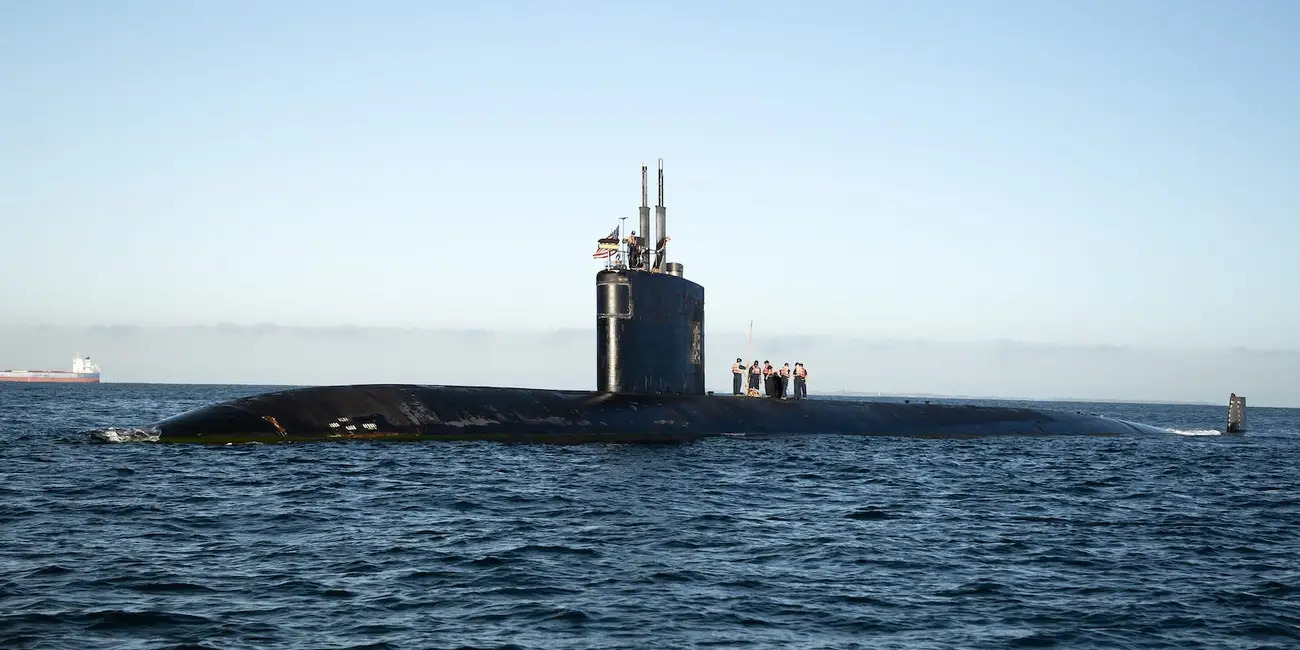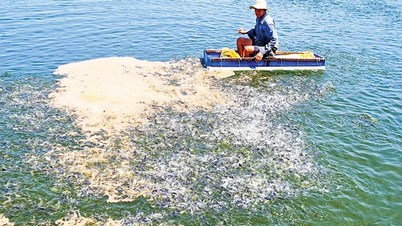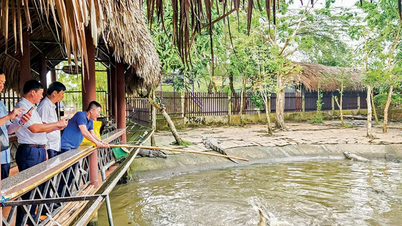HANH NGUYEN (According to Business Insider)
US and British submarines will soon be operating off Australia, potentially expanding their presence in the Indian and Pacific Oceans, where rivals are stepping up undersea operations.
USS Asheville, a US nuclear-powered fast attack submarine, visited Australia in March. Photo: Australian Department of Defence
In March 2023, US President Joe Biden and the leaders of the UK and Australia announced a historic submarine agreement under the AUKUS cooperation framework. Accordingly, Australia will own a new generation of US-made nuclear-powered fast attack submarines in the early 2030s, then continue to receive the first domestic submarines in the 2040s.
But for now, US and British submarines will visit Australian ports more frequently, and by 2027, attack submarines from the two countries (including four US and one British) will begin a rotational presence at the HMAS Stirling naval base near Perth, Western Australia, in the Indian Ocean. US officials say this presence will help develop Australia's ability to operate nuclear-powered submarines.
Russian and Chinese submarines are active
The AUKUS agreement comes as China and Russia are expanding their submarine fleets and becoming more active in the Pacific . Russia continues to add new submarines to its Pacific Fleet, including two in October 2022. One of these is the Yasen-class submarine, which is equipped with guided missiles and is quieter than other Russian submarines. As a result, many senior officers are concerned that the Yasen-class submarine could challenge the US Navy's tracking capabilities.
General Glen VanHerck, commander of the US military's Northern Command, warned that Russia's Yasen-class submarines could be a permanent presence off the US coast and become a "permanent threat" to the country in just two years.
In a recent report, the US Department of Defense assessed that Chinese submarines are generally not as advanced as Russian ones, but that the navy is making modernization a priority. On the other hand, Beijing’s undersea forces have also made notable advances. China’s newest submarines, the Yuan-class diesel-electric submarines, are quieter and have more advanced sonar equipment, “which is very effective in anti-submarine warfare.” The US Department of Defense noted that China’s six Jin-class nuclear-powered ballistic missile submarines are on “near-continuous” deterrence patrols at sea, a sign that the country’s submarine force continues to improve its operational capabilities.
General Anthony Cotton, commander of the US Strategic Command, testified before Congress earlier this year that the Jin-class submarines are being equipped with a third-generation missile - the JL-3. With a range of more than 10,000km, the JL-3 could allow Chinese submarines to fire missiles from the country's coastal waters to US territory for the first time.
These developments have led the US to place more emphasis on the ability to deploy submarines closer to the Western Pacific. Twenty-five of the US Navy’s 49 attack submarines are based in the Pacific. Washington has moved some of its submarines further west. In March 2022, the number of submarines based in Guam increased to five, up from two in 2021. The US Navy announced that it would increase investment in submarine support facilities in Guam to expand its ability to operate in the overseas territory. Like Guam, operating in Australia would bring submarines closer to the Western Pacific and allow them to operate more at sea.
Source link



![[Photo] Press delegation meeting to visit Truong Sa and DK1 Platform](https://vphoto.vietnam.vn/thumb/1200x675/vietnam/resource/IMAGE/2025/5/22/6b8d232877ec421a9e8187d83b9f8006)
![[Photo] General Secretary To Lam chairs a working session with the Central Internal Affairs Commission](https://vphoto.vietnam.vn/thumb/1200x675/vietnam/resource/IMAGE/2025/5/22/3b7790f499da45b2803d8ae253207ef1)
![[Photo] T&T 1 and Ho Chi Minh City 1 People's Police Teams won the men's and women's team championships](https://vphoto.vietnam.vn/thumb/1200x675/vietnam/resource/IMAGE/2025/5/22/39db06ae67cb4001b7a556e8d9a56d07)
![[Photo] Prime Minister Pham Minh Chinh chairs meeting on draft Resolution of National Assembly on International Financial Center in Vietnam](https://vphoto.vietnam.vn/thumb/1200x675/vietnam/resource/IMAGE/2025/5/22/d398664ff1a140629169ea5a24e1b4d0)














































































![[Podcast] Week introducing more than 500 OCOP products in Hanoi](https://vphoto.vietnam.vn/thumb/402x226/vietnam/resource/IMAGE/2025/5/22/d144aac2416744718388dbae3260e7fd)





Comment (0)